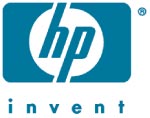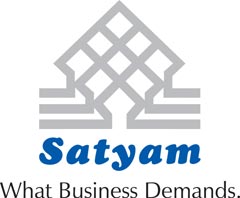|
|
|
ADVERTISEMENTS
|
|
PREMIUM
- HAPPY HOLIDAYS!
- Siliconeer Mobile App - Download Now
- Siliconeer - Multimedia Magazine - email-Subscription
- Avex Funding: Home Loans
- Comcast Xfinity Triple Play Voice - Internet - TV
- AKSHAY PATRA - Bay Area Event - Sat. Dec 6
- Calcoast Mortgage - Home Loans
- New Homes in Silicon Valley: City Ventures - Loden Place - Morgan Hill
- Bombay to Goa Restaurant, Sunnyvale
- Buying, Sellling Real Estate in Fremont, SF Bay Area, CA - Happy Living 4U - Realtor Ashok K. Gupta & Vijay Shah
- Sunnyvale Hindu Temple: December Events
- ARYA Global Cuisine, Cupertino - New Year's Eve Party - Belly Dancing and more
- Bhindi Jewellers - ROLEX
- Dadi Pariwar USA Foundation - Chappan Bhog - Sunnyvale Temple - Nov 16, 2014 - 1 PM
- India Chaat Cuisine, Sunnyvale
- Matrix Insurance Agency: Obamacare - New Healthcare Insurance Policies, Visitors Insurance and more
- New India Bazar: Groceries: Special Sale
- The Chugh Firm - Attorneys and CPAs
- California Temple Schedules
- Christ Church of India - Mela - Bharath to the Bay
- Taste of India - Fremont
- MILAN Indian Cuisine & Milan Sweet Center, Milpitas
- Shiva's Restaurant, Mountain View
- Indian Holiday Options: Vacation in India
- Sakoon Restaurant, Mountain View
- Bombay Garden Restaurants, SF Bay Area
- Law Offices of Mahesh Bajoria - Labor Law
- Sri Venkatesh Bhavan - Pleasanton - South Indian Food
- Alam Accountancy Corporation - Business & Tax Services
- Chaat Paradise, Mountain View & Fremont
- Chaat House, Fremont & Sunnyvale
- Balaji Temple - December Events
- God's Love
- Kids Castle, Newark Fremont: NEW COUPONS
- Pani Puri Company, Santa Clara
- Pandit Parashar (Astrologer)
- Acharya Krishna Kumar Pandey
- Astrologer Mahendra Swamy
- Raj Palace, San Jose: Six Dollars - 10 Samosas
CLASSIFIEDS
MULTIMEDIA VIDEO
|
|
|
|
|
INFOTECH INDIA | Tech Briefs:
India to Play Key Role in HP Strategy | DELL: Growth Plans | SATYAM: Forgery Lawsuit | Internet in India | Piracy Costs
India to Play Key Role in HP Strategy
 The combined entity of HP and EDS in India will have over Rs. 150 billion in revenues and over 56,000 employees, taking it a notch closer to IBM’s very significant presence in the subcontinent. In terms of offshore presence, the two together will overtake the other significant player in the services space, Accenture, that plans to take its headcount to 50,000 in about a year’s time. The combined entity of HP and EDS in India will have over Rs. 150 billion in revenues and over 56,000 employees, taking it a notch closer to IBM’s very significant presence in the subcontinent. In terms of offshore presence, the two together will overtake the other significant player in the services space, Accenture, that plans to take its headcount to 50,000 in about a year’s time.
In India, HP is structured across three major divisions, personal systems group, technology solutions group and the imaging and printing group, while MphasiS is mainly present in the IT services and BPO. The combined entity will see a very diverse set of IT business ranging from hardware, software, services, BPO and R&D , say industry observers.
But given that the key driver for the acquisition is to beef up the service portfolio and pose a credible challenge to IBM, India may play a much more central role in the future strategy of the combined entity . “Customers will now have a very clear choice between three large vendors — IBM, HP-EDS and Accenture. IBM will still be significantly ahead in terms of its offshore strategy — it has made significant investments in India. The combination of HP and EDS doesn’t immediately solve that problem,” said Gartner vice-president Ben Pring.
While EDS has much stronger services portfolio globally, its offshore presence in India through MphasiS is fairly recent. MphasiS itself has started getting direction and a cohesive offshore strategy even more recently after a new management team has been appointed. HP, on the other hand, has been unable to capitalize substantially on the offshore presence it acquired through Compaq in Digital Equipment Services.
Pring said that while there may be some redundancies because of overlap of functions, there may not be a substantial number because “HP is clearly buying EDS for its people.”
|TOP|
DELL: Growth Plans
 Computer maker Dell aims to become a $1-billion company in India by this year end and has drawn up aggressive expansion plans to achieve the target. Computer maker Dell aims to become a $1-billion company in India by this year end and has drawn up aggressive expansion plans to achieve the target.
“We are ramping up capacity at our manufacturing unit at Sriperumbudur in Tamil Nadu. We aim to become a $1-billion company in India by this year-end,” Dell's president A-Pac, Paul-Henri Ferrand, told PTI.
Dell is a leading global systems and services company and has till now invested around $30 million into its India operations.
Presently, the company manufactures around 400,000 desktops in a year. Post the ramp-up, its unit's capacity would increase to 1 million computers per year.
Dell also plans to manufacture laptops from its Sriperumbudur unit, Ferrand said.
The company plans to have its footprint in 100 cities through channels in the country by this year-end, he said.
“India is the fastest-growing market for Dell worldwide and laptops have emerged as the fastest-growing form factor. Dell has decided to focus on laptops worldwide as a strategic growth priority and the start of laptop production in India is an important part of our plan,” Ferrand said.
The company scents an immense potential in the country and intends to be present in all price bands. “Our concept is that people should be able to walk in to a nearby store and buy a Dell computer whenever they want,” he said.
|TOP|
SATYAM: Forgery Lawsuit
 A small innovator company, which Satyam Computer Services once worked for when the dotcom boom started in 1997, has now come back to haunt the billion-dollar technology services firm. The innovator firm, Upaid, has filed a lawsuit in a Texas court alleging that Satyam provided forged documents to Upaid in patents filing that eventually resulted in the company losing its patents infringement case against telecom giants Qualcomm and Verizon. A small innovator company, which Satyam Computer Services once worked for when the dotcom boom started in 1997, has now come back to haunt the billion-dollar technology services firm. The innovator firm, Upaid, has filed a lawsuit in a Texas court alleging that Satyam provided forged documents to Upaid in patents filing that eventually resulted in the company losing its patents infringement case against telecom giants Qualcomm and Verizon.
It has claimed compensatory and punitive damages from Satyam in the case that is scheduled for hearing in June 2009 in the Texas court. “The damages to be awarded will be determined by a jury in Texas. I cannot predict the future. But going by the numbers in the public documents that have been filed over the course of the proceedings in the London court, the amount could be considerably over $1 billion,” Upaid chairman and CEO Simon Joyce said.
Satyam had sought a High Court injunction in London that on the basis of the termination agreement between the two, which said that any residual claims against it would have to be tried in London. The Court of Appeal in London ruled in Upaid’s favor that the case can be heard in the U.S. court. In response to the ruling, Upaid issued a communication stating, “This ruling allows Upaid’s lawsuit against Satyam alleging fraud, misrepresentation, and breach of contract and what Satyam admits are ‘extremely large sums of money,’ to proceed to a U.S. trial in a Texas federal court.”
|TOP|
Internet in India
Call it the democratization of the Internet in India. Every one in 10 urban Indians (12 percent) is now net connected. Over two-thirds (70 percent) of all Internet users reside outside metros. And across urban and rural India, the Internet using population is evenly spread across all socio-economic classes. What’s more, over 70 percent Internet users prefer to access the net in Indian languages, with English users at just 28 percent, down from 41 percent in 2007.
There are over 49-million Internet users in the country. Urban users account for a bulk of it, 40 million, with rural net users numbering 9 million. Regular net users, defined as anyone accessing the net at least once a month, number around 35 million (30 million urban and 5 million rural).
Internet penetration (as percent of population) has crossed double-digit mark in urban India at 12 percent, up 3 percent from 9 percent last year, and rural penetration stands at 4.5 percent, according to online research & advisory firm JuxtConsult’s ‘India Online 2008’ — an offline survey of over 12,500 households across 40 cities and 160 villages countrywide to gauge the online behavior of Indians.
India’s net user demographics cuts evenly across socio-economic classes and extends beyond metros (which account for under a third, 30 percent, of all users now, down 6 percent from 2007’s 36 percent. A majority, over three-fourths (77 percent) users, are between 19-35 years of age, up 10 percent from 2007.
|TOP|
Piracy Costs
The Indian software industry lost about two billion dollars of revenue this year due to use of pirated software, a study has said.
A study by the Business Software Alliance, an international association representing the global software industry, showed that though computer software piracy rates in India declined, the country still registered losses to the tune of 2 billion dollars in 2007 in monetary terms, compared to $1.28 billion in 2006.
Piracy of software on personal computers in India has come down to 69 percentage points for 2007, toeing the global trend in which piracy rates dropped in most countries, the study said.
The software piracy menace has been haunting the major software developers like Microsoft.
Microsoft (India) managing director Neelam Dhawan had earlier said the industry is losing a large share of its revenue due to circulation of pirated software.
It has also acted as a dampener for the local software firms for developing applications.
“There are less Indian success stories of software applications being adopted on a large scale as India has a high piracy rate and therefore Indian companies do not make money,” an industry expert said.
Software piracy affects much more than just the industry revenues, it even hits the job market and eventually the country's economic growth.
|TOP|
|
|
|
|
|
|